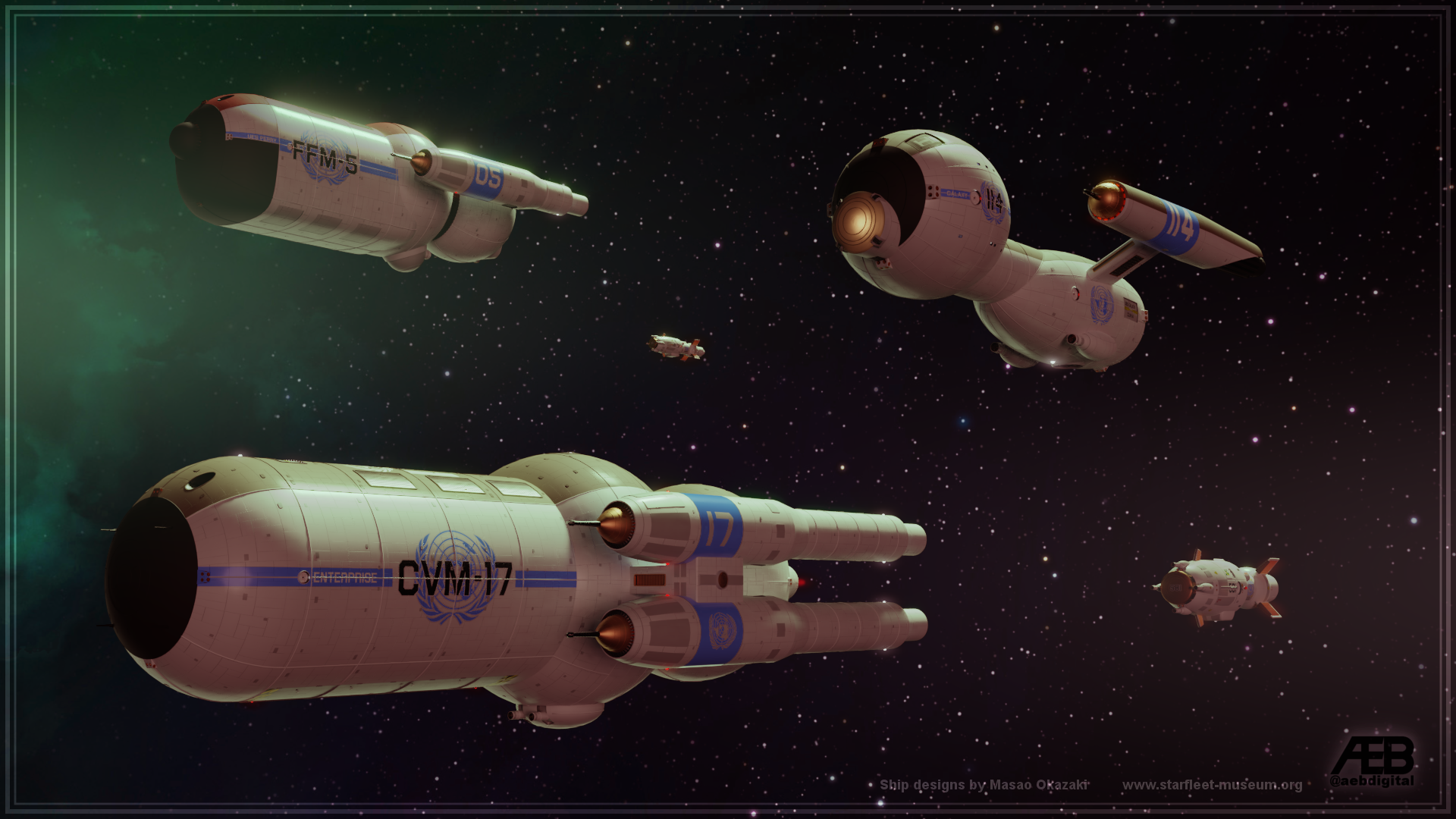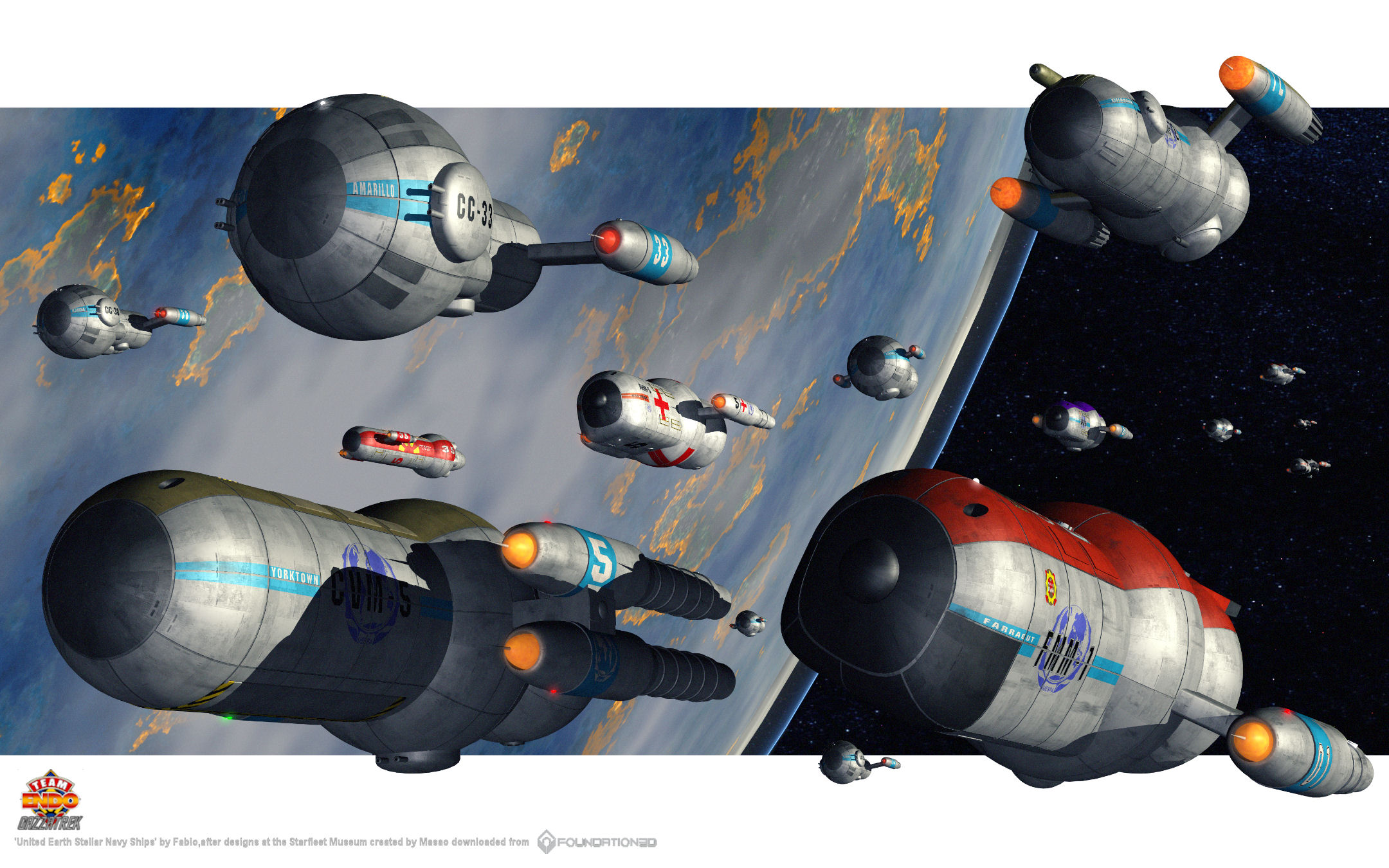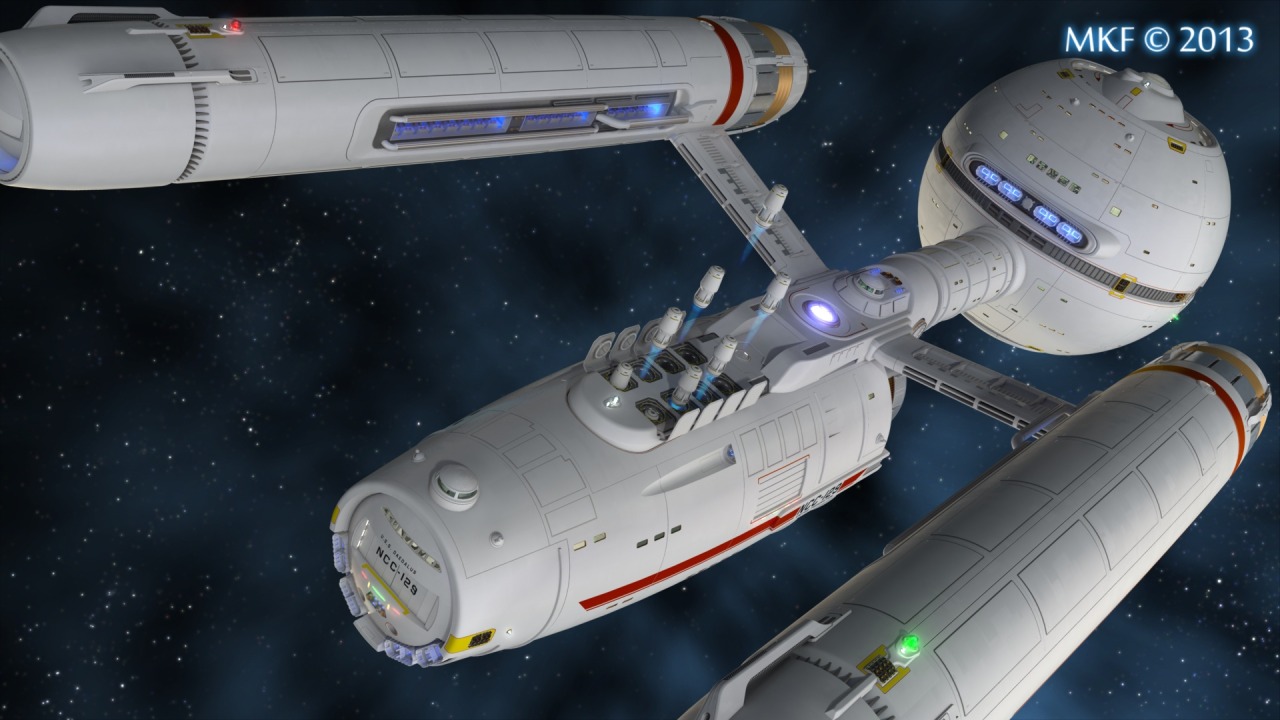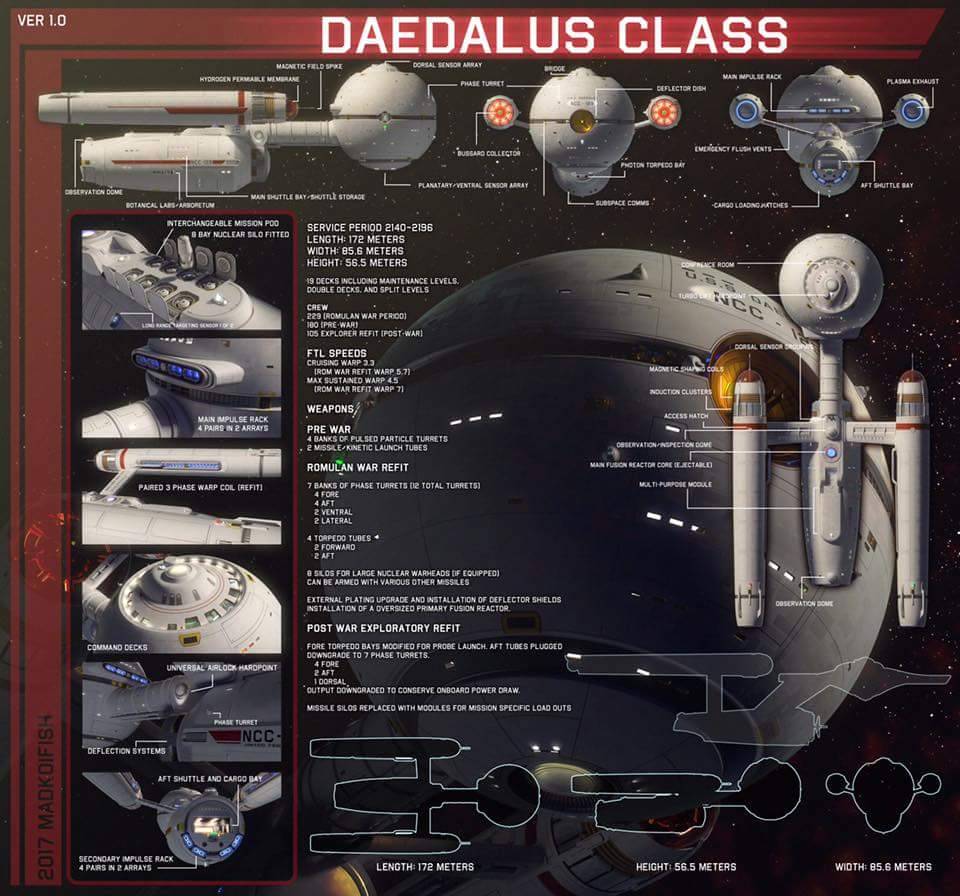It's 2127, and Starfleet's fancy new high-speed cruiser Enterprise is making a warp-five run. This won't be the first ship breaking the warp 5 barrier. The NX-alpha program made warp five-one. For about twenty minutes before their tanks were exhausted. Nobody's ever made a ship that can cruise at warp 5 while carrying a meaningful payload. (Think of the difference between the concorde and the bell X-1)
Everyone on the bridge is strapped down with six-point harnesses. (It's the 22nd century and inertial dampers aren't all that great yet. And even if they were, everyone's too scared of the cranky new engine to risk it.) The Pilots (it takes two to manage such a tricky engine) are all but cocooned in boards and controls, and in center-seat Captain Archer watches them with nervous caution.
>Warp 4.8...
>Warp 4.9...
>Warp--
Suddenly everything starts going wrong. Master caution alerts buzz, annunciation panels are lit up like Christmas trees. Both pilots and the unseen engineer are talking over each other reading off everything that's suddenly going wrong. Their voices are level, but strained as everyone tries to deal with the sudden tidal wave of Very Bad Things. This is no time for panic, but it's hard to suppress natural human fear. Archer's watching it all, soaking in every bit of information his crew's providing and evaluating it.
>OVER-G! OVER-G
Enterprise is really bitching at her crew now. The crew are busy troubleshooting and trying to work the problem when suddenly the bridge goes silent. The crew slump defeated in their seats, and Archer makes a note on his kneeboard. "Congratulations... we're dead." There's a pause as his crew stew in their failure. "So, what went wrong?"
His crew start analyzing their failure. They let the warp-shock get outside of its bounds and the ship literally fell off her own bubble. The abrupt exit from the warp-bubble tore her apart. They start discussing what they missed, how they missed it, and how they could fix it.
Archer's pleased that his crew's treating their failure as a learning opportunity. He expected them to make mistakes when going where no man's gone before, but you can't be an astronaut if you can't learn from your mistakes and stay cool under pressure. His crew's already proposing solutions to the problem to make sure it doesn't happen again (watchdog programs to drop out of warp gracefully if the shock gets unrecoverable, etc.) Obviously they're gonna run this again, so everyone gets busy resetting their switches and setting up for another simulation.
Before they can start again, Archer gets a call from Admiral Forrest. The Vulcans are here, and they want to talk to him. Archer doesn't like the vulcans. His father worked on the NX-alpha program, and he had to deal with their constant second-guessing when he was a test pilot. They're convinced their ring-type drives are the proper technology, whereas Cochrane and Dad-Archer think paired nacelles have more potential. Vulcans kept concern-trolling and trying to push humans into following *their* technological path instead of forging into unknown territory.
Forrest is waiting outside the sim with a few vulcan representative. Now that Enterprise is ready for flight, they've taken an interest in the new drive system. Ostensibly because they want to be there to aid when the engine inevitably explodes, but also because they're astonished the engine *isn't* the giant raging dumpster fire they were certain it was. They want a Vulcan advisor/observer attached to Enterprise. If the engine breaks, she'll be able to fix it/help. And on the off chance it doesn't, she'll let the Vulcans get in on the ground floor.
Archer begrudgingly agrees to her presence. He doesn't like the Vulcans, but he'll accept she might be useful to have around. He's still gonna have some fun, so he offers to show her the engine room.
The Sovereign Nation Of Engineering is the domain of one Tripp Tucker, a Martian-born engineer who's dialed the usual Martian ingenuity up to eleven. It's said that if you leave a Marian alone with a washing machine and a roll of duct tape for more than an hour, he'll have it flying loops, and Tripp's no exception. Enterprises' engine might be Cochrane and Dad-Archer's baby, but he's its babysitter, and he's gotten very good at babysitting the cranky and temperamental system.
T'Pol, the Vulcan observer, gets a tour. The reactor is massively bigger than anything the Vulcans have flown, and makes up for its lack of finesse through sheer size. T'Pol's curious how the humans managed to get clean power off such a monstrous engine, and Tripp admits they didn't. The plasma coming off the reactor (humanity's first operational A/AM reactor for ship use, not just brief test hops) is *incredibly* "dirty".
But the catamaran extensions are stuffed with intercoolers to condition the power and get it at least kinda-sorta clean enough for engine use. T'Pol is shocked the primitive humans are able to condition power that well, and Tripp admits they aren't. The nacelles are just built rugged enough to eat fluctuating power without exploding. Oh, and there's also the static warp-field governor nestled between the cat's that smoothed out the warp bubble without providing any motive power. If you average the three out the warp field stays stable. The odds of all three spiking at the same time are astronomical.
T'Pol's too apoplectic to say anything as Tripp stacks her arms full of padds with all the math proving the engine *probably* won't explode. (Vulcans do research to prove something WILL work. Humans do research to prove that it WON'T fail, then build it to see what happens.)
There is some hullabaloo while T'Pol is trained how to live aboard an earth starship. The crew show her through a radiation-leak drill, which astonishes the Vulcan. The human crew just about their duties (getting to shielded sections of the ship, popping anti-rads) without much drama. Vulcan ships would throw containment shields down automatically. One of the crew tries to comfort T'Pol by saying core leaks almost never happen. It's usually just a false alarm. The idea that alarms for the *warp reactor core exploding* sometimes just go off for no reason does not comfort the Vulcan.
She later gets her security clearance from Major Hayes, a Martian-born MACO who's doing double-duty as Enterprise's security chief and EV tech. He's used to working in a spacesuit, being a martian and all, and he's got a refreshingly blunt approach to safety that... sort of calms T'Pol. No false comfort, just "if you fuck this up, you will die of a sucking chest wound/severed limb/chewing vacuum/etc." Weapons carried by MACOS are primitive by Vulcan standards (either plasma pistols or even slugthrowers) on the theory that simpler means less that can go wrong.
With T'Pol up to speed, its time for Enterprise to make her first hop. A quick run to Alpha Centuri to pick up a xeno-linguist who'll be joining the crew. (Dr. Hoshi Sato, aged up to justify her knowledge of alien languages.) The initial colony ships took a year to make the flight at warp 1.6, and even modern passenger liners take two months. Enterprise will do it in just under thirteen days. T'Pol finds take-off incredibly rough, only to be informed that was a rather smooth event.
Enterprise links up with a few slower Warp-Deltas in LEO. They might only be able to sprint at warp 4, but they'll be on hand to help if Enterprise finds herself stranded in the black. There's an exchange of pleasantries and teasing between the captains (Erika Hernandez is one of them. She was in the running to get Enterprise for herself before Archer got the slot) and then we're off. Enterprise prepares for her first ever non-simulated warp flight. Everyone's strapped down and doing their pre-flights. This is a much more involved process than we're used to seeing, especially considering Enterprise is a cranky prototype.
Archer makes the call, all stations report go/no-go for warp. One by one each station reports they're go. The music swells as Enterprise vibrates with anticipation. Then Archer gives the word. "Engage."
Enterprise roars into warp, effortlessly leaving her escorts in her bow-shock. (Ideally, use the Star Trek Beyond warp effect to better display "This ship is going FREAKING FAST") But aboard the bridge, everyone's tense. The pilots call out speed as Enterprise smashes her way past records and barriers.
>Warp four-eight...
>Warp four-nine...
>Warp five!
The crew cringe, expecting something to go wrong..
>Warp Five-oh-one...
>Warp Five-oh-two...
>Holding steady at five-oh-two.
For all their training, all their practice... Enterprise punched through warp five without so much as a shimmy. She might be a cantankerous bitch in drydock, but she's a proper lady when she gets to stretch her legs and really *run.* Nervous laughter all around as the bridge crew realize they're now the fastest living things ever. But nobody can shake the feeling that *something* should be going wrong now. Well, except T'Pol. She derides the humans' edginess as an emotional failing. Archer points out it's good to be on-edge when you're doing the impossible, keeps you sharp.
Archer calls back to starfleet command, reporting the Enterprise is underway at Warp 5
Just under two weeks later, Enterprise is closing in on Alpha Centuri after an uneventful cruise. The crew start listening in to Centuri ATC as they set-up for orbit interface. As earth's oldest colony, Alpha Centuri is a busy place and there's a lot of traffic going around. A few Deadlus-class ships dropping by to refuel or drop off their payload. Archer calls in. "This is Enterprise, requesting orbital-interface vectors."
Centuri ATC comes back at him. "Copy Enterprise, we see you at..." a long pause follows. The bridge crew struggle to keep straight faces and a few burst into restrained chuckles. "Uh... two-thousand AU, closing at.. one-two-five c?" He can hardly believe his eyes.
"Yeah that's us." Archer's reveling in being the Fastest Man Alive. "Our instruments show the same."
Another pregnant pause. "Uh... copy, Enterprise."
Enterprise slams out of warp with a flourish and gives the plodding old cruisers a flyby. Unfortunately, that's about all she *can* do right now. Shorty after she dropped out of warp her engines broke. Much to T'Pol's bemusement, the attitude on the bridge is less horror and more "for crying out loud, not *again.*" Archer explains that the warp 5 engine was *notoriously* temperamental in the design phase, and even now they expect to have some bugs to work out. T'Pol is surprised they'd fly such a cranky engine, but Archer tells her sometimes you get a few scraped knees learning to run.
Trip calls up to announce the engine's broke, but he's already drawing up a list of parts he needs to fix it. T'Pol visits him and he explains the engine is actually *very* reliable. It's super easy to fix when it inevitable breaks down. But, he'd still like to take his time and fix it the right way, since he's got a spacedock to play with and all. Archer agrees, and Enterprise docks for repairs while the crew shuttles down for shore-leave.
And booze.
Apparently every ship in orbit offered to buy drinks after Enterprise came roaring in.
Enterprise pulls into the local drydock (or lands, if we wanna make things that primitive) for repairs. Tripp's watching over the docking procedure because nobody--but *nobody* is gentle enough for his cantankerous girl. Archer goes to round up Dr. Sato, while the crew heads out for a night on the town. There's celebrations everywhere, think early space-race parades for the astronauts. These men and women have just done something impossible, and everyone wants to be part of it.
Before long, a few crewmen are shambling drunk in a bar, cheering each other on and generally having a good time. Centuri is nominally a human colony, but it's a hub of trade for all the minor powers in the area. Earth was a little shy about letting people come straight "home", but Centuri served as a semi-expendable alpha-site, and the colonies needed more trade anyways. So there's more than just humans buying drinks for the crew. Including a denobulan who keeps trying to proffer off increasingly-vile beverages. The crew refuse to partake, but accept the intent behind the act. (as it turns out, it was Phlox trying to test hangover cures because he was bored.)
Meanwhile, Archer's meeting up with Dr. Sato. She's part of colony administration, mostly by being the only person who can speak Denobuan, Vulcan, Andorian, *and* Tellarite without having an offensively bad accent in any of them. She knows enough about the cultures to get by without committing any major faux-pas. He tries to get her onboard, but she's initially shy of the concept. Going where no man has gone before isn't her fortay. Meeting new civilizations though...
With the promise of making new friends, Archer gets Sato on his side, and he's able to convince the colonial governor to let her go for a while. Sato says her goodbyes, and goes to pack her stuff. Archer offers to help, after all... there's things about living in space that don't come easily to ground-dwellers.
Maybe Sato and Archer start to click. She's around his age now, even though her soft people-driven field is at odds with his test-piloting background. In any case, they're bound by their common interest in exploring. Archer wants to see new places, Sato wants to meet new people but they both want nothing more than to peek at what's beyond the horizon.
Meanwhile, T'Pol's nominally supervising the repair work on Enterprise's wrecked engines. Luckily, the ship was designed for just such an eventuality. Even if they break, her engines are built to be easily repaired using parts on hand. It should only take a few days to swap out the broken intercooler parts. Tripp grumbles about how he *knew* they were going to be trouble when he's not asking T'Pol for wrenches and such.
Much to her chagrin, the Vulcan's been demoted to tool gofer. She wasn't complying with Tripp's superstitions "Never *ever* test close the access panels before you test a thing. The magic won't get in." But Tripp's an old Martian and set in his ways. And, as he's keen to point out, it's only a superstition when it doesn't work. But T'Pol kept touching things and treating the engine like a piece of machinery, not a lady who needs to be coaxed into action, so she's not allowed to leave her corner anymore.
Back on the planet, Phlox has become an earnest drinking buddy of the Enterprise crewmen. They like him, he finds them interesting scientific studies (and also, he likes them) everything's good. However even astronauts have their limits, and Phlox takes it upon himself to herd the happily drunk crewmen back to their ship for the night.
Enterprise is repaired and the crew returned for a shakedown run of her engines--plus Sato as an observer. Archer takes her out on a quick jaunt to the local gas giant and back at a leisurely warp four-five to start (so far no trouble.) But before they can do a warp-5 test, a distress call comes over the subspace radio.
A freighter is under attack by Naussican pirates. The local warp-deltas are ten hours away even if they run their engines flat-out the whole trip--which is questionably safe. Archer volunteers his ship to assist. Enterprise can make it in two without breaking a sweat. There's some consternation about if it's wise to take the brand-new Enterprise into a fight so soon, but Archer makes the decision. "Our people are at risk over there, If you're not willing to risk yourself for them, get off my boat!" There's no time to get Sato back dirtside, so she finds an open seat in the back of the bridge (the conference area on the show) and straps herself in. The crew run through an abbreviated checklist and punch Enterprise into warp. Like before, the big ship takes to warp like a fish to water, eager for a chance to stretch her legs. Reed's already heating up the tactical systems, and T'Pol gets called to the bridge to observe/assist if need be.
Meanwhile, the merchant ship is frantically banging away it's maday while pirate skiffs zip around smacking it with lasers and mass-accelerators. Enterprise has radioed that she's on her way, but the pirates laugh it off as a ploy by the humans. *Nobody* makes ships that that fast, not with any meaningful weapons. Are the humans really down to throwing experimental prototypes at them? But then a crewman notices something on sensors. Something closing on them *awfully* fast.
Enterprise slams out of warp with all guns blazing, sweeping the sky of k-slugs with her laser turrets and sliding herself right into the pirates' firing solution. Archer opens hailing frequencies and--with Sato's help--orders the pirates to power down their weapons and set course for Centuri where their ships will be impounded and their crews put on trial. (Archer doesn't like pirates, but is still gonna be lawful here.)
The pirates don't like this, and tries to make a break for it. All Reed needs is a two-word command. "Weapons Free." Missiles leap from Enterprise's batteries, arcing towards the fleeing pirate with all their fusion-powered fury. The pirates' lasers try to shoot down the missiles, and he even gets one. But their speed and jinking is too much for him and the nuke-tipped warheads smash though feeble 22nd century navigational shields and wreck his engines.
Archer again repeats his demand, this time to a more compliant audience.
The two surviving pirates are almost done taking on wounded from the damaged ship when the warp deltas *finally* arrive. Archer's gracious in accepting their praise, and points out it was really his ship and crew that made the difference. The flotilla forms up and returns to Centuri at a sedate warp 2-9. Enterprise doesn't need to stretch her legs, she's shown the world what she can do. Now she gets a turn to bask in her glory.
The crew returns and Archer meets Phlox as the latter tends to Nassuicans wounded in the skirmish. Archer's more interested in what the pirates have to say than anything, but Phlox decides this would be an ideal time to push his services as a medical expert. He's on Centuri in the first place because he wanted something different and exotic from what he was doing back on Denobula. He wanted a challenge and the feeling that he's really doing meaningful work. For a while being a frontier doctor did that for him, but now Centuri's getting so developed he's turning into just another man in a labcoat.
Archer agrees, and after talking with the Colonial governor, lets Phlox join the crew. Meanwhile, he's got another call from Admiral Forrest. There's a chunk of space a dozen light-years from earth known as the Expanse. There's nothing special about it, other than being a huge void on every known map.
The Tellarites haven't been out that far (they're on the other side of Sol from the Expanse, making it not worth the fuel to fly that far.) The Andorians have mostly expanded towards the Tellarites with only a few colonies bordering the Expanse, and don't like to share information more than they have to. But they've been noticing strange things happening on the border. The Vulcans know of the Expanse, but their only response is "Yes, we know of the Expanse. No, there's nothing there. Never ask that question again."
Humans being humans, we just *had* to go and poke it. Mostly because it's a patch of unclaimed space that we can expand into, but at least partially because of the human drive to explore and touch strange new things. Recently, things around the border have been going... strange. probes disappearing for weeks at a time, only for their chronometers to show they were never gone. Shadows in space, spooky shit like that.
(If you haven't figured it out by now, "The Expanse" is Romulan space. The Vulcans don't like to talk about it because the Romulans are an exemplar of everything wrong with their species, at least in their mind. They were exiled from Vulcan for their emotional, aggressive ways in the earliest days of Vulcan space-flight. Nobody really expected them to survive the flight. But survive they did, and it turned them into a people as hardy as they are crafty. The physiological differences (head ridges) are the byproduct of genetic sequencing to let them survive better on their outcast homes.)
Anyways, Enterprise with her great speed is ideal for poking around in deep space. Archer's orders are to link up with the colonial forces on Draken (a handful of warp-deltas and long-range Daedalus cruisers too find anything more than dust when they respond to frantic distress calls) and find out what's going on. Archer accepts, and gathers his crew.
Finally, it's time for Enterprise to start her trek.





